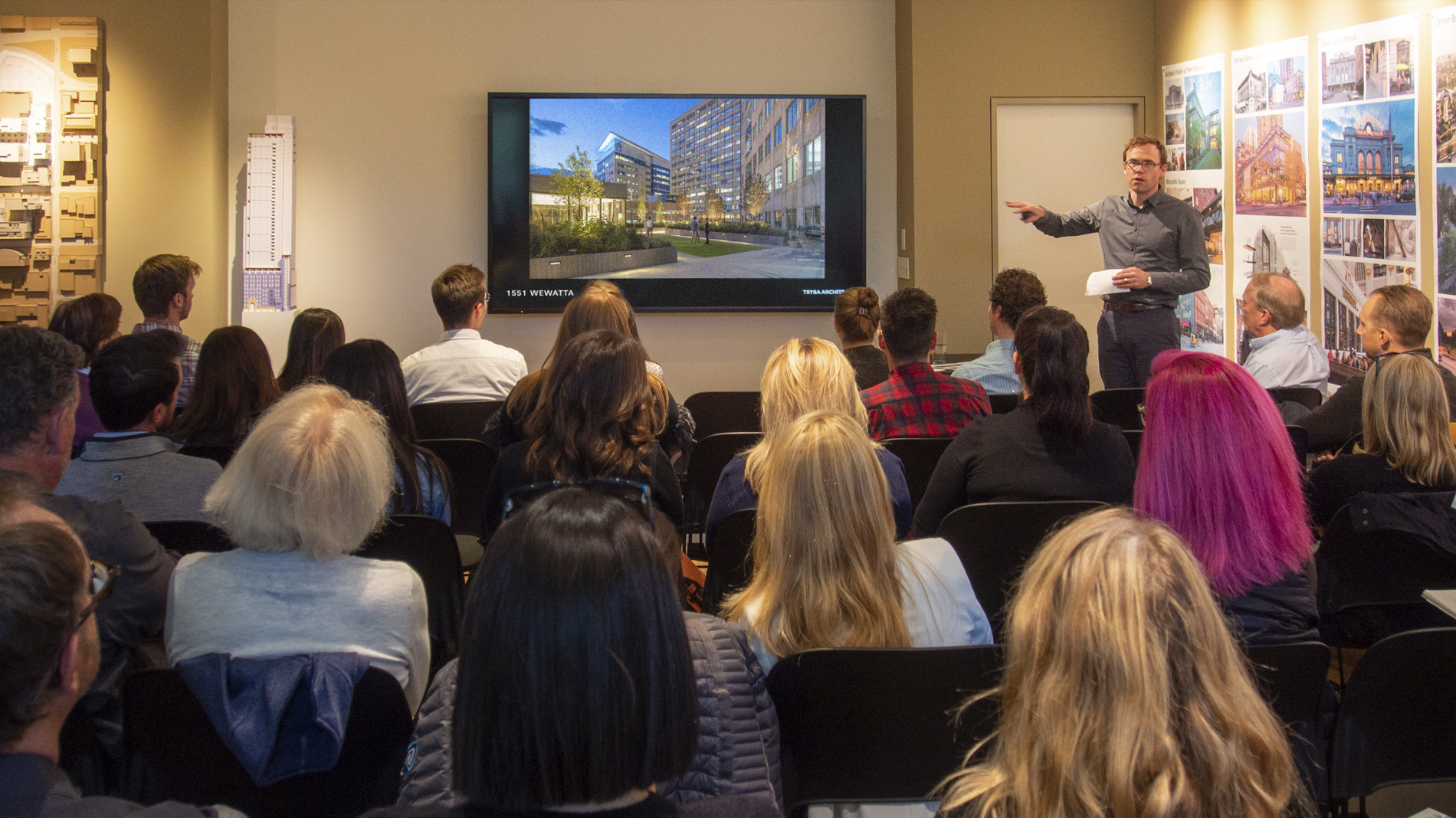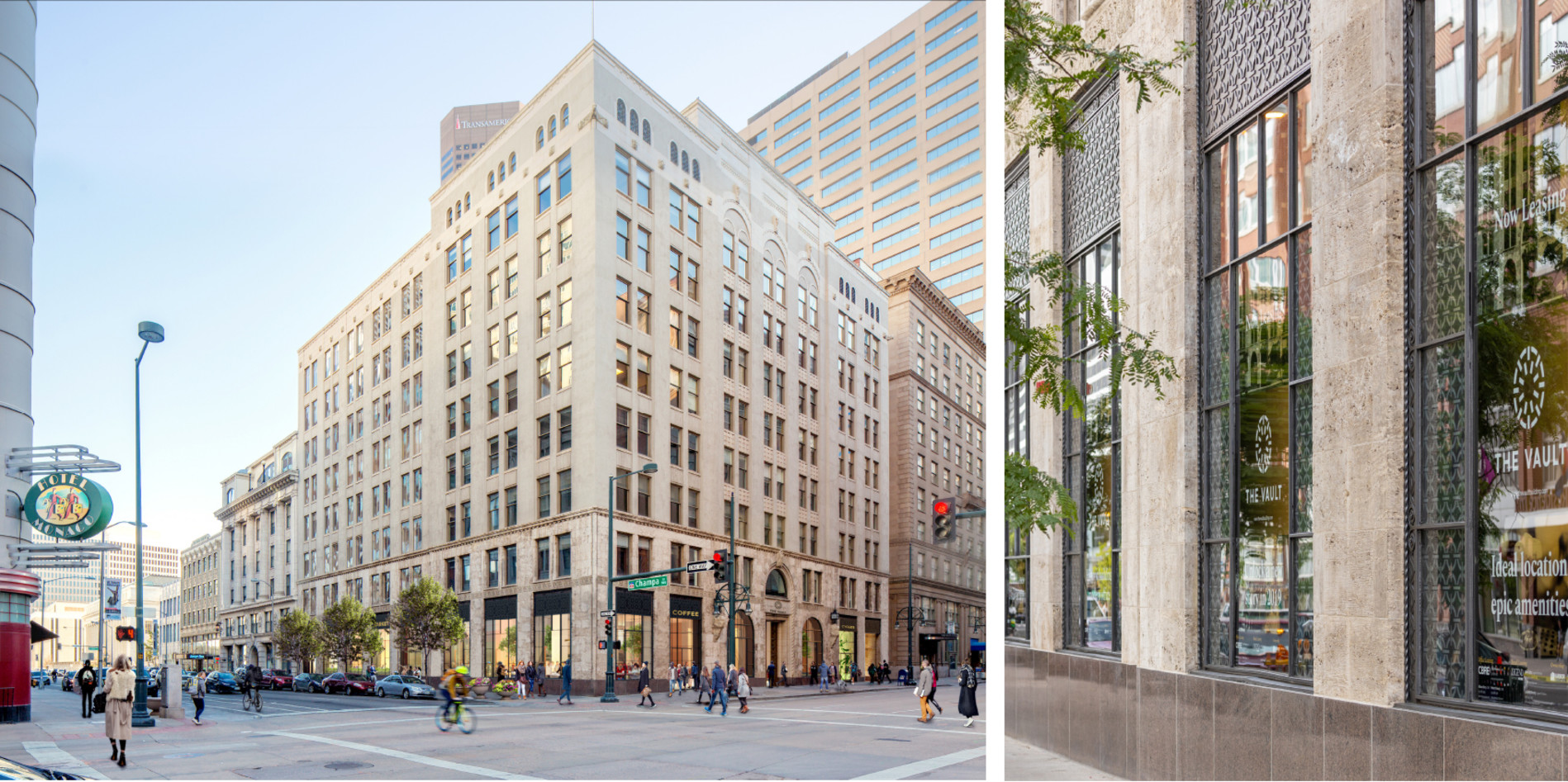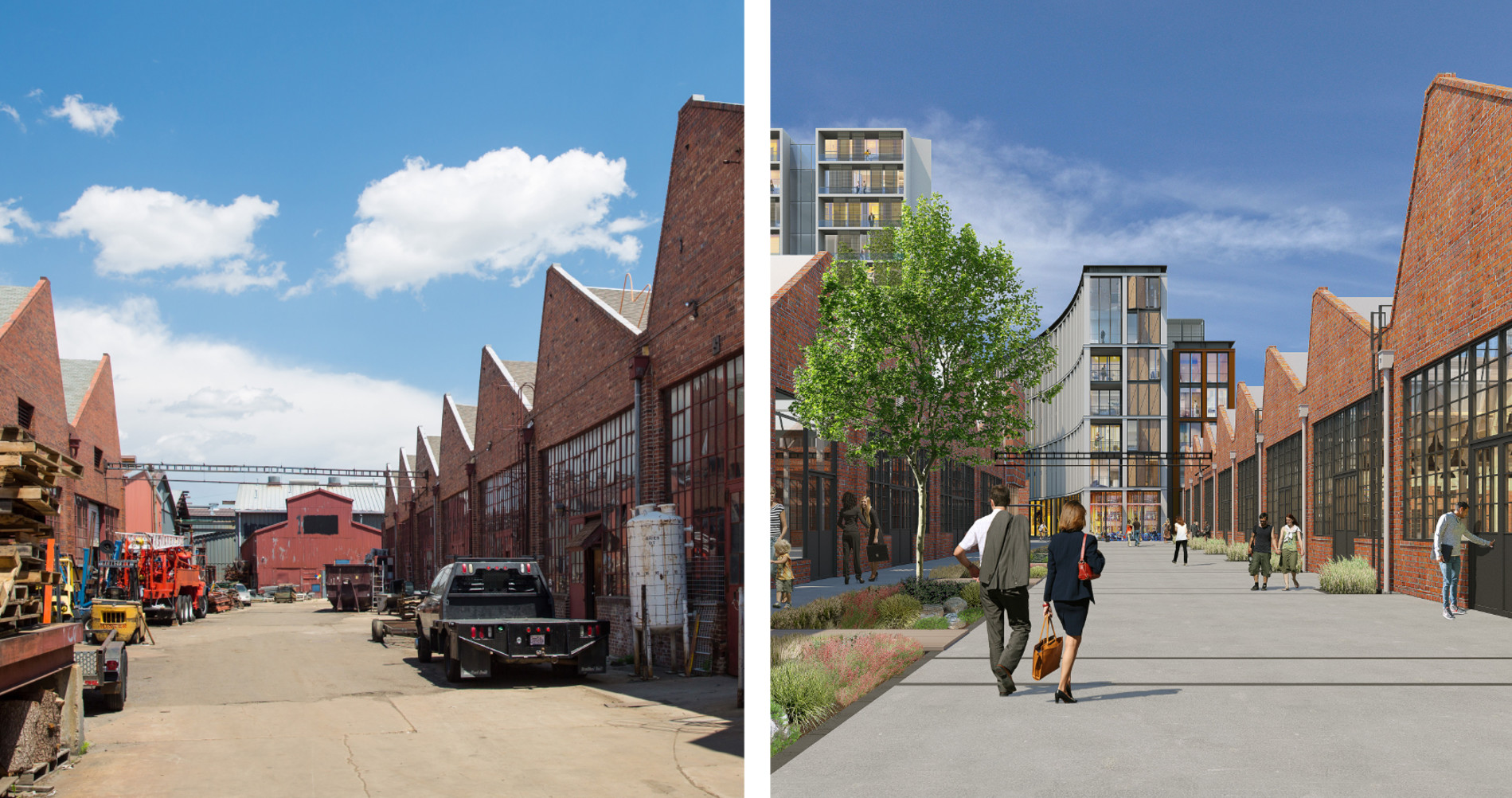
Tryba Architects hosted a Denver Design Week event focusing on the role of adaptive reuse in the revitalization of cities, maintaining the relevance of existing buildings, activating urban fabric and providing continuity between the past and present. The discussion was led by Principal John McIntyre who was joined by panelists Chris Phenicie of CBRE and Joon Choi of Harbor Associates.
Nearly forty percent of greenhouse gas emissions can be attributed to carbon produced by buildings during construction and during everyday operations. The Brookings Institute forecasts that 82 billion square feet of existing space will be demolished and replaced between 2005 and 2030 in the United States alone. The practice of adaptive reuse can prevent some of this demolition, extending a building’s useful lifespan and allowing it to become a critical component of urban regeneration and the cultural memory of the city. Reusing existing buildings can help avoid unnecessary carbon production, thereby reducing the production of greenhouse gases contributing to climate change and offering an important means for cities to achieve their immediate carbon reduction goals.
Tryba Architects is committed to the repair, restoration and rebirth of existing structures. Beginning in 1987 with the transformation of the Auditorium Arena into the Temple Hoyne Buell Theater to the recent restoration and rejuvenation of Denver Union Station and the Crawford Hotel, a substantial portion of our work includes the rigorous recovery and renewal of landmark structures and places.
In 1996 Tryba completed the masterplan and design for the conversion of six historic masonry warehouses from the 1800s into The Tattered Cover Bookstore, Dixon's Restaurant, 98 affordable rental apartments and a boutique wine shop. This urban revitalization project was the first multi-building mixed-use adaptive redevelopment in Lower Downtown--the catalyst for reinvestment in and preservation of today's revitalized historic district.

Tryba Architects is currently working with Harbor Associates to reposition 821 17th Street in Downtown Denver. One of the Four Corners buildings in Denver’s financial and business district, the Ideal Building was originally built in 1907 and was the first major multi-story building to be built in reinforced concrete west of the Mississippi. In November of 2017 the building was purchased by Harbor Associates. The building has been rechristened ‘The Vault’ and is conceived of as a repository of local history, memories and innovations. The upper floors of the building have been reintroduced to the market with fresh light-filled floor plates and the lower floors are being restored and improved to include building amenities and retail spaces.

Tryba Architects is also currently reimagining Denver Rock Drill, a historic industrial site, as a mixed-use community housing office tenants, artists’ studios, apartments, food and beverage production facilities, restaurants and retail. This project provides the opportunity to both preserve and revitalize two city blocks—a 671,000 sf site, including 155,000 sf of adaptive reuse of historic buildings in Denver’s historic Cole neighborhood.

Adaptive reuse has been a critical component of our practice for over 30 years and forms a fundamental pillar of our sustainability strategy. The lessons learned through this work continue to inform our approach to new buildings, urban design and placemaking. The reinvention of existing buildings minimizes the carbon production associated with new construction, provides a real sense of connection to place and historic continuity, and ensures the continued relevance of the existing urban fabric of our cities and the financial and cultural investment that this represents.